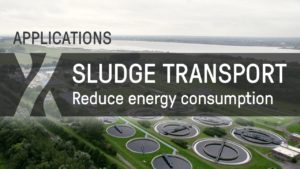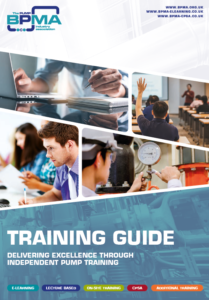Ice cold: Transforming a Football Stadium into an Ice Stadium
The opening game of the World Championships was held on 7th May 2010 between the host team of Germany and the United States in the Veltins Arena at Gelsenkirchen, which was transformed into the world’s largest ice hockey stadium.

Veltins Arena at Gelsenkirchen (Image: AST)
Germany, a declared outsider, beat the United States team 2-1. But before this historic victory, extensive restructuring work had to be carried out on the football stadium to transform the grassy surface into a hockey pitch.
Teams of technicians removed the turf and installed mobile chillers and large equipment for producing and cooling an artificial ice surface of 1800m². Powerful and reliable ITT Lowara pumps designed for cooling water ensured the uniform distribution of chilling fluid, guaranteeing high quality ice for this important sports event.
With perfect timing, it was not a football flying across the Veltins Arena but a puck. For the opening match at Gelsenkirchen, the Austrian company AST, as general contractor, set up a complete ice hockey pitch including dasher boards, protection for spectators, cabins with benches for the players, penalty boxes and, of course, the goal nets. For the cooling of the 60 x 30 metre artificial ice surface, the AST technicians chose chillers by Germany company Cool Energy, specialists in mobile refrigeration systems for the industrial and commercial sector – and in the organisation of events. Eight air-cooled chilling systems, pumps and compensation tanks were installed outside the stadium. They had to cross a considerable distance to the inside of the stadium to supply chilling fluid at temperatures as low as -14°C and at a pressure of 3 bar. A high power reserve also had to be installed, since more than 77,000 spectators under the domed roof produce heat as well as noise. The professionals in chilling and conditioning laid 500 metres of 4-inch water pipes in the complex, complete with distributors, flanges and valves, as well as numerous high-capacity cables. And they installed eight ITT Lowara hydraulic pumps. There were only four days left to produce the ice.
Florian Schweizer, Technical Manager of Cool Energy, told us: “Besides the technical aspect, above all the field of application was interesting, that is, an artificial ice rink in the stadium and the idea of a world record number of spectators.
“Thanks to the parallel connection of different chillers and pumps, we were able to supply a high quantity of cold fluid, virtually whenever required; the only limit is defined by the current available on the site. This makes the pumps especially important. We use Lowara pumps, series FHS 50-160/75 with an electric power of 7.5 kW. We chose pumps of this type because, in various years of use, they have proved to be sturdy and reliable. These pumps offer a wide range of applications for our largest chillers. Even in critical applications, such as ice rinks with open systems and a high loss of pressure, they can be used with excellent results. As well as technical advantages, the choice of these pumps is linked to other positive factors: a good price/performance ratio, rapid availability of pumps and spare parts, a personal advisory service and customer assistance from the manufacturer.”
Production of an ice surface using the absorption technique
The base of mobile ice hockey pitches is formed by so-called absorption lanes (AST ice mats), composed of small absorbing pipes which, laid side by side, create the desired surface: ultimately, this will be the ice surface. The chillers chill “saline water” coming in, a mixture of glycol and water, to a temperature between -7 and -14°C and pump it through the ice mats at a pressure of 3 bar. The temperature on the surface falls below freezing point. Water is sprinkled according to a determined system and with variable temperatures of saline water this creates a resistant and stable ice surface. Flat surfaces, thickness of the layer and temperature are particularly important for the playability of the ice surface in a world ice hockey championship. As well as calculating the necessary chilling power and the performance of the hydraulic system, the expertise of the AST ice rink producer is extremely important.
Water chillers that are literally ice cold
For the constant cooling of the ice surface, the cold specialists used eight particularly powerful water chillers. For fast loading and unloading, the chillers are lifted with forklifts or cranes onto transport frames and can be simply and rapidly installed. Each unit has an electric control cabinet which, according to the external temperature and the load, regulates the water temperature and the compressor by means of microprocessors. Since the pipes and the quick couplings are colder than 0°C, the humidity in the environment freezes on the pipes, which is called “deposition”. A real curtain of ice several centimetres thick is therefore generated in the daytime, and acts as insulation. The materials used for pipes, pumps, gaskets, etc. must satisfy the maximum possible operating requirements.
With such excellent preparation, the event was more than just a sporting success. With 77,803 spectators present at the opening game, a new world record for ice hockey spectators was recorded and included in the Guinness Book of Records.
Source: Xylem Inc.






